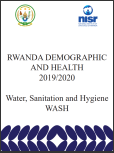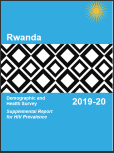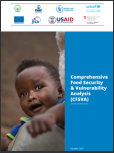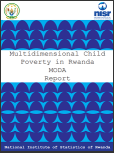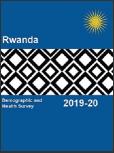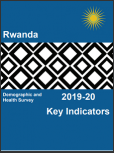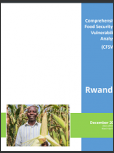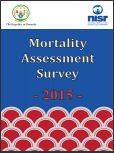Rwanda Demographic and Health Survey 2019-20 - Supplemental Report for Micronutrients
The primary objective of the 2019–20 RDHS is to provide up-to-date estimates of basic demographic and health indicators, including estimates of micronutrient indicators. As part of the survey, blood samples were collected to measure biomarkers of inflammation, anemia, iron, vitamin A, and vitamin B12 status in children age 6–59 months and in women age 15–49. In addition, women were tested for folate (blood sample) and iodine status (urine sample). Anthropometry and malaria infection data were also collected for children age 6–59 months and women age 15–49.
RWANDA DEMOGRAPHIC AND HEALTH SURVEY :Water, Sanitation and Hygiene (2019/2020)
This report defines and computes indexes of progress in water provision, sanitation services, and hygiene for Rwanda, as well as an overall WASH index. The raw data come from DHS, EICV, and MIS surveys, from 2010 through 2020.
Rwanda Demographic and Health Survey 2019-20 - Supplemental Report for HIV Prevalence
This report is a supplent of the full report of RDHSVI2019/20(DHS6) published officially in December 2021 at Marriot hotel and at NISR and DHS Program websites.
The DHS6 has been implemented by NISR, RBC with the support of Government of Rwanda and its partners institutions such USAID, UN Agencies and others
The DHS6 has been conducted countrywide in 500 villages(clusters) where interviews were conducted in 12949 households, on 14634 women and 6513 men.
The prevalence of HIV in Rwanda is 2.7% in adults people 15 to 49 years
Comprehensive Food Security and Vulnerability Analysis - 2022 Report
This report provides a comprehensive analysis of who the food insecure and vulnerable people are in the country, where they live, how many they are, why they are food insecure/vulnerable, what can be done to improve their lives and livelihoods, the impacts of the COVID-19 pandemic, how the situation is likely to evolve, and the risks associated for food and nutrition security in Rwanda
Multidimensional Child Poverty in Rwanda (MODA) Report
The present Multidimensional Overlapping Deprivation Analysis (MODA) report is a follow-up to the 2018 study to measure Rwanda’s multidimensional poverty situation among children under 5 years of age using the Demographic and Health Survey 2019/2020. The study also includes a trend analysis in child poverty based on evidence from DHS 2014/15 and DHS 2019/20.
Multidimensional Child Poverty in Rwanda (MODA) Report
The present Multidimensional Overlapping Deprivation Analysis (MODA) report is a follow-up to the 2018 study to measure Rwanda’s multidimensional poverty situation among children under 5 years of age using the Demographic and Health Survey 2019/2020. The study also includes a trend analysis in child poverty based on evidence from DHS 2014/15 and DHS 2019/20.
The 2019-20 Rwanda Demographic and Health Survey (RDHS)
The 2019-20 Rwanda Demographic and Health Survey (RDHS) is designed to provide data for monitoring the population and health situation in Rwanda.
Demographic and Health Survey 2019/2020 - Key Indicators
The primary objective of the 2019-20 Rwanda Demographic and Health Survey (RDHS) is to provide up-to-date estimates of basic demographic and health indicators.
The Comprehensive Food Security and Vulnerability Analysis_2018
The 2018 CFSVA marks the fifth time that this type of survey has been conducted in Rwanda. The previous analysestook place in 2006, 2009, 2012, and 2015 under the overall leadership of the National Institute of Statistics Rwanda. The results of this CFSVA highlight the continuing positive trends from previous studies, namely that since 2006, Rwanda has taken great strides in reducing poverty and malnutrition in the country.
Mortality Assessment Survey (MAS) 2015
The Mortality Assessment Survey (MAS) produces estimates of Crude Death Rate; Infant Mortality Rate; Under-five Mortality rate; Neonatal and Post neonatal mortality rates; Maternal Mortality Ratio; the sex-age pattern of mortality and finally Life table construction.


